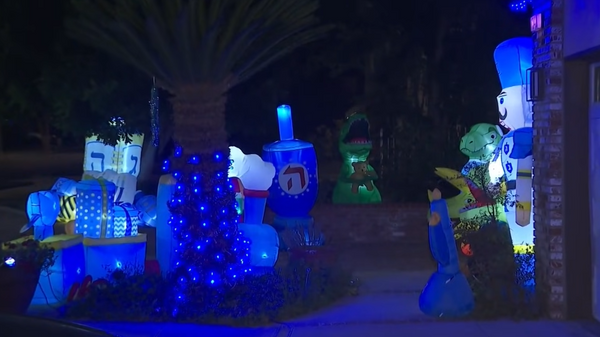
Graphic novels as a concept are already criminally underrated. They’re novels with PICTURES – that fact alone places them head and shoulder above all the other “great works” in the Western canon – which are just boring jumbles of plain old text. Why would I want to read about some sailor’s quest to murder a fabled white whale if I can’t actually see pictures of him doing it? Answer: I wouldn’t. Until they turn Moby Dick into a graphic novel, I’m not reading it. While there are plenty of iconic comics that have enjoyed the praise of the masses, this list is for the underrated graphic greats – illustrated Moby Dicks that never quite surfaced for a moment in the sun. Avast, here are the 10 most underrated graphic novel!
Monstress

Monstress by Marjorie M. Liu and Sana Takeda is an epic that takes place in a fantastical East Asian world. Rendered in a rhapsodic art deco style, the novel follows Maia – a teenage girl attempting to hide her magical identity from the ruling sorcerer class. Maia is an Arcanic, human-esque beings that are captured by human spell casters and consumed as batteries. Not content to live life as a glorified Duracell, Maia strikes out alone on a quest to avenge her dead mother – aided by the demon that lives in the stump where her left arm used to be. Maia must learn to master the monster within to survive in this world, and to claim the vengeance she’s been so long denied. It’s told through Sana Takeda’s spiritually stylish art – think 1920’s take on the biblically accurate angel. Lots of wings and eyes, all laced in glittering gold.
Kabuki

Kabuki by David W. Mack is the story of a titular assassin who takes their codename from a historical style of Japanese theatre. Working for a shadowy government agency called “The Noh,” Kabuki is one of many agents that hunts down and executes enemies of the state in this near future Japanese society. Brimming with rich sci-fi world building, the novel details how The Noh rose out of the devastation of World War II, and how Kabuki got her start working for them. The series feels like a more morally complicated Ghost In The Shell – a franchise already known for its thorny philosophical questions. As brutal as it is intellectual, the series features high octane action as Kabuki works to preserve the delicate balance between lawfulness and criminality that allows her dystopian society to function at peak capacity. You can’t make an omelette without breaking a few eggs, after all.
Everything Is Teeth

Everything Is Teeth by Evie Wyld is a delightfully weird memoir about author’s childhood obsession with sharks. While visiting her relatives who live on the Australian coast, young Evie fell head over fins for the for the flesh-eating monsters. As her obsession with Shark Week‘s stars deepens, she’s slowly exposed to the gory details of human mortality – the blood and guts beneath the skin reachable by shark bite. The creatures become a source of comfort for Evie as she navigates the difficulties of growing up, and she’s dogged by imaginary visions the killing machines in nearly every panel. Sharks in this novel serve as a sort of guardian angel, emotional support fish that Evie depends upon for strength and support. It’s a delightfully grim story about the adolescent mind – one that seeks beasts in dark depths to find the light.
Hot Comb

Hot Comb by Ebony Flowers is a series of short stories centered around the lives of Black women. The titular story follows a young girl who receives her first perm in an effort to fit in with her community, only for it to backfire completely. The novel uses hair as a symbol for the ways that people attempt to fit in and stand out in the world, and how rigid social views around hair cause struggles for minorities. The novel also deals with misunderstandings around hair, the story “My Lil Sister Lena” follows a young girl who is the only Black player on her softball team, and her white teammates’ preoccupation with her hair causes her to develop an anxiety disorder centered around pulling it out. Tender coming of age stories told with slice of life realism form a quiet mediation on race, class, and self-expression.
Upgrade Soul

Upgrade Soul by Ezra Claytan Daniels is the story of Hank and Molly Nonnar, an elderly couple who dream of being young again. While most old people might celebrate their 45th anniversary with a nice slice of spongecake and a visit from the grandkids, Hank and Molly decide to sign up for an experimental rejuvenation process to turn back the biological clock. Instead of turning into hot twenty-somethings, the couple are faced with a different reality: they’ve been cloned. Though horribly disfigured, their duplicates are smarter and stronger than they are, and Molly and Hank now struggle to fit into a world shared by their superiors. It’s a heady novel about the realities of aging and death, seen through the eyes of those who desperately wish to escape it – but no dice.
Kill Six Billion Demons

Kill Six Billion Demons is my personal all time favorite underrated comic: the story of Allison Ruth, a barista turned god-killer. After being spirited from her college dorm by a runaway divinity, Allison lands in Throne – the city at the center of all 777,777 universes. Blessed with a divine power that she barely understands, Allison is called to defeat the Demiurges – seven tyrannical gods that have each claimed 111,111 realities for themselves. With the help of an angelic martial arts teacher and a sapphic demon lover, Allison may just be able to topple the gods and rescue her ex-boyfriend in the process. Part progression manga, part spiritual text, Kill Six Billion Demons teaches that the only true path to Heaven is littered with the broken bodies of your enemies. Hallelujah.
It’s Lonely At The Centre of The Earth

It’s Lonely At The Centre of The Earth by Zoe Thorogood is a portrait of an artist on the brink of collapse. This graphic memoir chronicles the worst six months of Zoe’s life, where the young artist’s only solace from depression was creation. Shifting between timelines, art styles, and inner voices, Zoe’s harrowing artistic journey rendered through a surrealist lens. As the title suggests, it’s the story of a young woman who has burrowed deep into her own inner world for survival, only to discover that their are no easy answers, and no clear path forward. It’s the story of a critical moment in the career of many artists: deciding for oneself how to continue a creative journey – even when that journey seems complicated, self-destructive, or even “crazy” to those on the outside.
Enigma

Enigma by Peter Milligan is the story of Michael Smith, an unremarkable telephone repairman whose life changes after he follows a floating lizard into the waiting jaws of a monster (yes, really). Just before he meets an untimely death, he’s saved by The Enigma – a superhero from a comic series he loved as a kid. After quitting his dead end job, Michael tracks down the author of the Enigma comics, begging him to help stop a cadre of supervillains that have recently invaded his city. As Michael works alongside Engima and the hero’s creator, he begins to come to terms with his budding feelings of same sex attraction. A surreal superhero story that serves as a coming-out parable, Enigma is the story of a man whose inner desires have, until recently, been a mystery even to himself.
Shubeik Lubeik

Shubeik Lubeik by Deena Mohamed is a story where wishes really do come true! Provided they’re approved by the bureaucracy that controls them and you have the money to pay. The novel follows Aziza, Nour, and Shokry, three citizens of Cairo who are each chasing down their heart’s desire. One wishes for the return of her lost husband, and has to deal with the bureaucratic fallout that such a wish entails. Another wishes to “fix” her depression – but what does that really mean? The last is attempting to help a friend use their wish, grappling with his religious faith in the process. As it turns out, wish granting is far more complicated than flicking a magic wand, there are serious complications for every wish – you know what they say, “careful what you wish for.”
The Song of Aglaia

Anne Simon’s The Song of Aglaia tears a page out of Madeline Miller’s book and reimagines Greek myth for the modern age. The novel revolves around Aglaia, a sea nymph cast out of her ocean home after being seduced by a merman. Forced to wander the world alone and bereft, Aglaia waltzes smack dab into a walking Beatles reference named Mr. Kite, who accepts her into his traveling circus – where she meets a waltzing horse named Henry. A playfully surreal reinterpretation of dour Greek stories, The Song of Aglaia is world myth with a modern feminist spin.
Have a tip we should know? [email protected]







